It's usually easy to forget that changes are natural. Visit most
national parks, for example, and things seldom change from year-to-year. The many
remarkable waterfalls at Yosemite National Park are always the same, except for seasonal
variations in water volume. Old Faithful at Yellowstone National Park has its name for
good reason. Sunsets from the rim at Grand Canyon National Park are remarkably consistent.
The startling clear blue water at Crater Lake National Park persists year after year.
| But change is normal at Hawaii Volcanoes National Park on the Big Island
of Hawaii. Over the past 30 years, ongoing volcanic activity has perpetually helped to
reshape the park, closing roads, covering trails and continually altering the park's
landscape. A reminder of how much things change was reinforced during a recent visit,
including the 11-mile drive around Crater Rim Drive, which loops around the Kilauea
caldera, a raw, nearly lifeless landscape, and the 38-mile round-trip along the Chain of
Craters Road. Hawaii Volcanoes, including the Kilauea caldera, was created by cataclysmic
volcanic activity. Kilauea is a rolling plateau that encircles the cliff-bounded caldera.
Two to three miles across, the caldera is about 400 feet deep, the remnant of a series of
violent eruptions, earthquakes and rock falls. Although the last major explosion happened
in 1790, a series of "quiet" lava flows have continued over the years. |
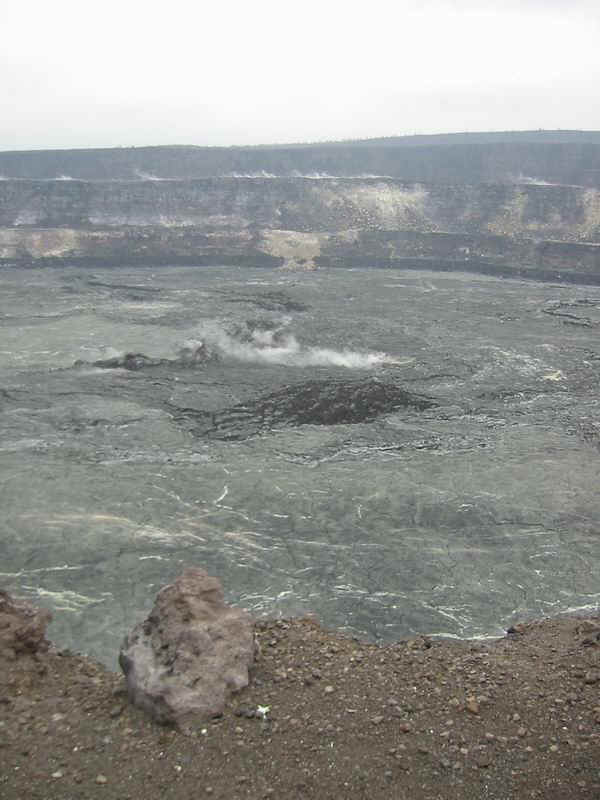
|
|
Kilauea Caldera, the home of Pele |
I've visited Kilauea several times over the past 30 years. The first time I stayed
overnight in a camper at a now-closed campground near the caldera. Most recently, I
over-nighted at the Volcano House, a historic hotel perched on the northeast edge of
Kilauea.
Mark Twain stayed at an earlier, far more primitive version of the Volcano House. The
original 1846 accommodations have been significantly upgraded, but it remains a
comfortable, old style country lodge that's most remarkable for its location. Like the
Crater Lake Lodge, the Volcano House offers visitors a truly unique right-out-the-window
experience. It's not known for its dining excellence, but views from the restaurant are
truly delicious.

|
Delicious, too, were several wines from the Volcano
Winery, located just outside the park. The winery specializes in tropical fruit blends and
honey wines, although there are also two traditional all-grape wines. We brought home one
of those, a bottle of Symphony, a crisp, dry white wine, and tasted Symphony Mele, a
sweeter all-grape wine. The blends include Pele's Delight, a blend of burgundy, French
Colombard and jaboticaba berry, and Hawaiian Guava, which combines guava fruit with French
Colombard. Also making its way into our suitcase was a bottle of Macadamia Nut Honey Wine,
made with 100 percent tropical honey gathered by honeybees from Macadamia Nut blossoms. |
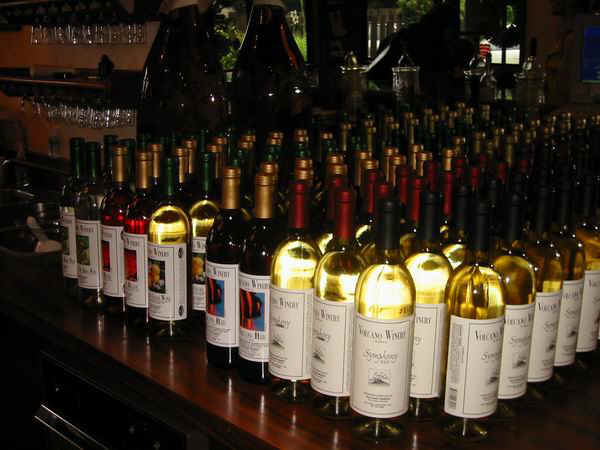
|
|
|
|
But visiting Hawaii Volcanoes National Park is really about its volcano and cataclysmic
history. The easiest way to view Kilauea's highlights is by driving the Crater Rim Road
and stopping at its many overlooks. The must-do stop offers a short walk to the
Halema'uma'u overlook, which peers into an eerie, foreboding crater that's the legendary
home of Pele, the Hawaiian goddess of fire. Halema'uma'u was last active in 1974.
| Better than driving is hiking. Trails bisect and loop around the crater
and, better yet, crisscross the Kilauea caldera. A favorite hike loops around the
neighboring Kilauea Iki crater, a 4-mile round-trip walk. We also took the easy half-mile
loop trek through the Thurston Lava Tube, and stopped at the Devastation Trail, a short
half-mile stroll through a landscape left stark and barren from Kilauea Iki's 1959
eruption. Longer hikes and overnights are possible. A few years ago my daughter Molly
and I backpacked down the cliffs of the Hilina Pali to a camping spot at Halape cove at
the Pacific Ocean. We swam and snorkeled and for dessert cracked open fresh coconuts. The
next day we followed the Puna Coast Trail 13 1/2 miles back to the Chain of Craters Road,
where we hitched a ride back to our parked car. I didn't have time to go backpacking, but
I did revisit some day hikes, and go on some new to me trails. Among those was a 1 1/2
mile hike to Pu'u Huluhulu Cone. The trail rambles over 1973-74 lava flows to a 300-foot
tall volcanic cone, where we were treated to views of the East Rift Zone, Pu' 'O'o, Mauna
Loa and the Pacific Ocean. |
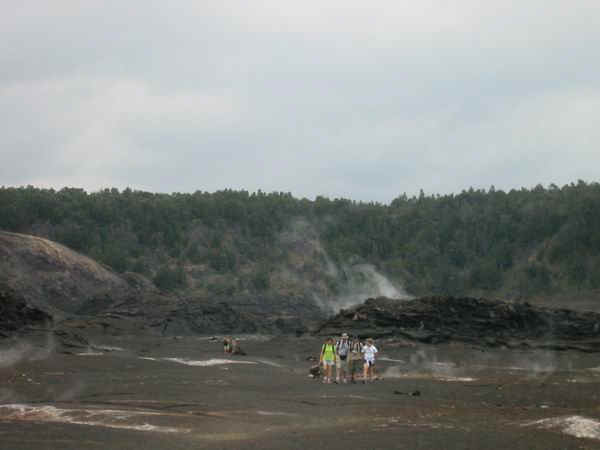
|
|
Hikers in the Kilauea Iki Crater |
We also drove the Chain of Craters Road to its current ending point and, from there,
followed a half-mile one-way marked route over hardened lava. At several spots,
"Stop" and "No Parking" barely signs poke above recent lava flows that
have continued with only brief interruptions since January 1983. In 1992, flows destroyed
the coastal village of Kalapana and buried 189 buildings nine miles east of the road's
present ending point. In 2003, another section of the highway was covered by a flow.
Although the not-very-helpful rangers at the Kilauea Visitor Center insisted there was no
current activity, during our hike sunset and nightfall revealed bright red glows from yet
another volcanic outbreak. The outbreaks have been frequent. Signs tell the history of
several recent flows. Driving around the Kilauea Crater I realized that most of road has
been rearranged and rebuilt since my initial visit in the 1970s. Pele, it seems, never
really rests.
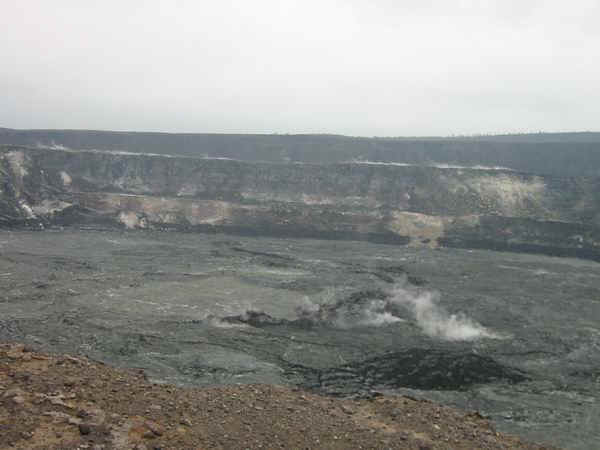
|
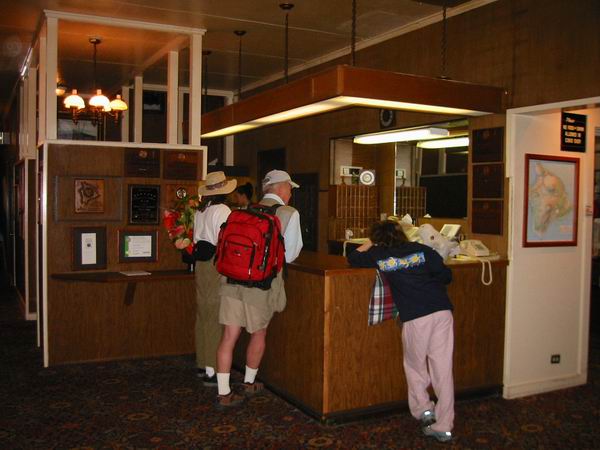
|
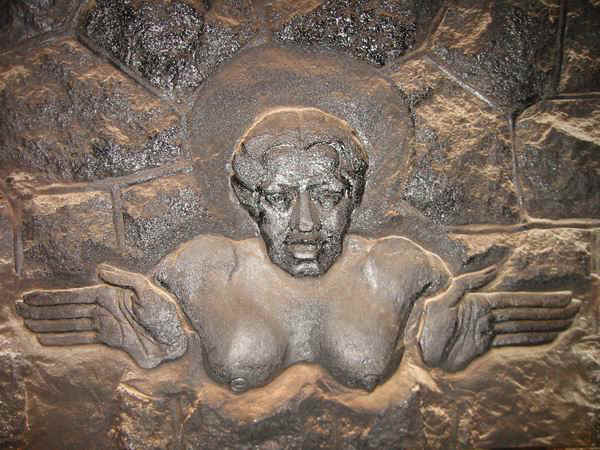
|
The Hot Drive around Kilauea Crataer. |
Hikers get information from the
desk at the Volcano House. |
Pele's image is sculptured into
the fireplace at the Volcano House. |
Photos by Lee Juillerat
Email at lee337@cvc.net
When You Go
Hawaii Volcanoes National Park
Getting There: The Big Island of Hawaii has two main airports at Kona and Hilo. Kona is
larger, and is served by several major islands. Interisland flights by Hawaiian and Aloha
Airlines connect the island with Honolulu and other islands. Many companies provide rental
vehicles.
Staying There: Lodging can often be done in conjunction with package trips offered by
several companies. For park information contact Hawaii Volcanoes National Park, PO Box 52,
Hawaii National Park, HI 96718-6000; telephone (808) 985-6000; www.nps.gov/havo. For
lodging information in the park contact Volcano House Hotel, Crater Rim Drive, Hawaii
Volcanoes National Park, HI 96718; (808) 967-7321;
www.volcanohousehotel.com; volcanohouse@earthlink.net. At the park, also visit the Volcano
Art Center, located next to the park visitor center. Outside the park in Volcano village
is the Volcano Winery. Some visitors also schedule flights over the volcano,
especially during its eruptions, or spend afternoons at the Volcano Golf Course.
Some especially useful guidebooks include: "Hawaii: The Big Island Revealed,"
Andrew Doughty and Harriett Friedman; "A Pocket Guide to Hawaii's Birds," by H.
Douglas Pratt; "The Rough Guide to the Big Island of Hawaii"; "Road Guide
to Hawai'I Volcanoes National Park," Robert and Barabar Decker.
|